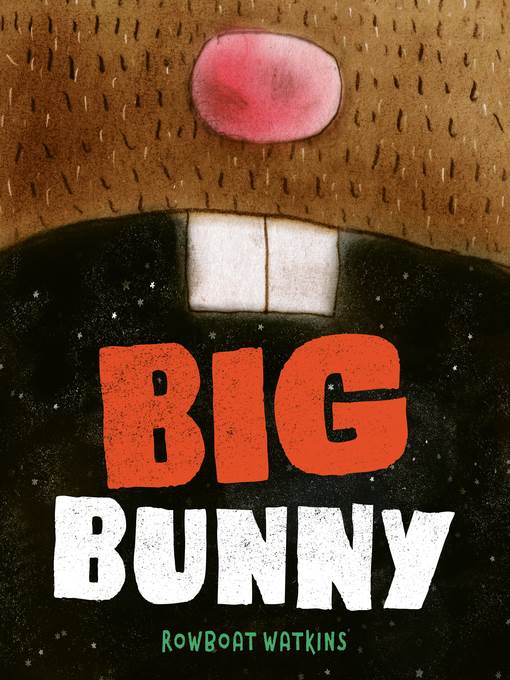
Big Bunny
فرمت کتاب
ebook
تاریخ انتشار
2018
Lexile Score
380
Reading Level
1
نویسنده
Rowboat Watkinsناشر
Chronicle Books LLCشابک
9781452165530
کتاب های مرتبط
- اطلاعات
- نقد و بررسی
- دیدگاه کاربران
نقد و بررسی

Starred review from February 26, 2018
In this inventive, clever outing, Watkins (Rude Cakes) ponders what’s scary and how much context matters. We hear—but don’t see— what seems to be a parent and child bickering over the fright quotient of a bedtime story involving a big bunny—or, as the child prefers, “a ginormously SCARY bunny.” The parent tries to pull the story back from the brink by insisting that the rabbit wants to eat carrots and carrots only, but the young reader pushes for something more terrifying. “Big Bunny ate ten carrots in one! bite!”’ proclaims the parent, trying to drum up drama. “Not scary,” retorts the child. The parent finally capitulates (“Fine... you tell it”), and the bunny becomes a giant omnivore, devouring a bridge, trucks, and an entire cityscape. Who could possibly find such a ravenously monstrous bunny scary? A page turn provides the answer: the parent and child are lettuce. As the story descends into a child’s version of Grand Guignol, Watkins’s pictures exude the giddiness of an imagination unleashed. Ages 3–5. Agent: Rosemary Stimola, Stimola Literary Studio.

March 15, 2018
A little reader adapts their caregiver's bedtime story."Once upon a time, there was a BIG BUNNY," begins the storyteller. "A ginormously SCARY bunny?" prompts the listening little one. As the story spirals larger and larger and finds the giant bunny ingesting the contents of vegetable trucks driven by trucker penguins, Watkins comments upon the push and pull between adults and children and what each party wants in stories for little ones. Watkins' illustrations are dynamic and absurd, pushing the boundaries of scale and perspective as the Big Bunny rampages through the story. There is no text but dialogue, the child's in a boldfaced sans-serif type and the adult's in a much more staid typeface. The eventual reveal of the storyteller's and listener's identities is a great gag, and there are plenty of little jokes scattered through the margins that readers of all ages will enjoy. Watkins' glee in crafting a near-anarchic tale is infectious, sparking imaginations and appreciation for storytelling in equal measure.An exciting and endearing tale for young and old alike. (Picture book. 3-7)
COPYRIGHT(2018) Kirkus Reviews, ALL RIGHTS RESERVED.

May 1, 2018
K-Gr 2-This bedtime story comes to life comically through dialogue between what readers might assume to be an unseen parent and child. Using two distinct font styles and imaginative illustrations, the exchange begins with an adult voice, "Once upon a time, there was a Big Bunny," while a curious, scary-story-seeking child interjects questions onto the story line. Instead of stifling the child's inquisitiveness, the adult attempts to make the story exciting by describing the bunny eating hundreds of carrots, adding trucks (and truckloads of carrots), bridges, and more-but as the narrative begins to bore the child, the adult proclaims, "Fine...you tell it." In the child's version, Big Bunny quickly begins eating up the story's trucks, the bridge, and buildings, but then, in a near final page turn, readers realizes that the parent and child telling this story are actually heads of lettuce. Watkins's muted illustrations, in watercolor and pencil, are both helpful and playful; they inventively express the creative mayhem of a little lettuce's imagination. VERDICT This clever story within a story will perplex and intrigue young readers. With "ginormous" read-aloud appeal, this title is highly recommended for picture book collections.-Brianne Colombo, Fairfield Free Public Library, NJ
Copyright 2018 School Library Journal, LLC Used with permission.

























دیدگاه کاربران